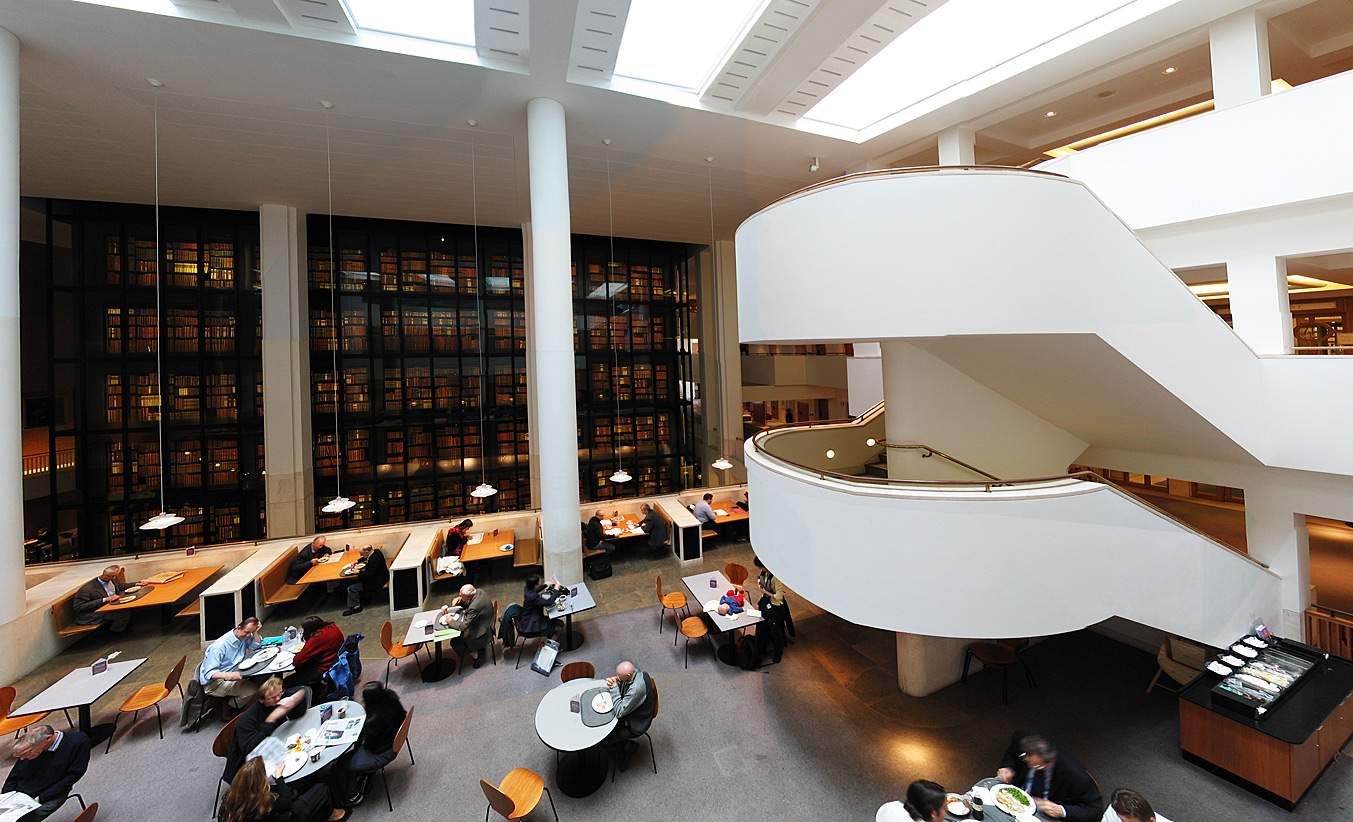|
Coptic Binding
Coptic binding or Coptic sewing comprises methods of bookbinding employed by early Christians in Egypt, the Copts, and used from as early as the 2nd century AD to the 11th century.It is sometimes claimed that the Coptic binding, and thus the western codex, originated in the 4th century AD. While codex binding did flourish in the 4th century, several extant codex fragments are dated to the 2nd century, and more than 250 exist from before the year 300. (See Turner, chapter 7, and Szirmai, chapter 2.) The term is also used to describe modern bindings sewn in the same style. Coptic bindings, the first true codices, are characterized by one or more sections of parchment, papyrus, or paper sewn through their folds, and (if more than one section) attached to each other with chain stitch linkings across the spine, rather than to the thongs or cords running across the spine that characterise European bindings from the 8th century onwards. In practice, the phrase "Coptic binding" usually re ... [...More Info...] [...Related Items...] OR: [Wikipedia] [Google] [Baidu] |
Coptic Flat
Coptic may refer to: Afro-Asia * Copts, an ethnoreligious group mainly in the area of modern Egypt but also in Sudan and Libya * Coptic language, a Northern Afro-Asiatic language spoken in Egypt until at least the 17th century * Coptic script, the script used for writing the Coptic language, encoded in Unicode as: ** Greek and Coptic (Unicode block), a block of Unicode characters for writing the Coptic language, from which Coptic was disunified in Unicode 4.1 ** Coptic (Unicode block), a block of Unicode characters for writing the Coptic language, introduced in Unicode 4.1 ** Coptic Epact Numbers, a block of Unicode characters for writing Coptic numerals * Coptic Orthodox Church of Alexandria or Coptic Church, the largest Christian church in Egypt and the Middle East * Coptic Catholic Church, an Alexandrian Rite particular Church * Coptic architecture, the architecture of the Copts * Coptic binding or Coptic sewing, methods of bookbinding employed by early Christians in Egypt Other ... [...More Info...] [...Related Items...] OR: [Wikipedia] [Google] [Baidu] |
Coptic Sewing
Coptic binding or Coptic sewing comprises methods of bookbinding employed by early Christians in Egypt, the Copts, and used from as early as the 2nd century AD to the 11th century.It is sometimes claimed that the Coptic binding, and thus the western codex, originated in the 4th century AD. While codex binding did flourish in the 4th century, several extant codex fragments are dated to the 2nd century, and more than 250 exist from before the year 300. (See Turner, chapter 7, and Szirmai, chapter 2.) The term is also used to describe modern bindings sewn in the same style. Coptic bindings, the first true codices, are characterized by one or more sections of parchment, papyrus, or paper sewn through their folds, and (if more than one section) attached to each other with chain stitch linkings across the spine, rather than to the thongs or cords running across the spine that characterise European bindings from the 8th century onwards. In practice, the phrase "Coptic binding" usually re ... [...More Info...] [...Related Items...] OR: [Wikipedia] [Google] [Baidu] |
Ethiopian Binding
The Ethiopian bookbinding technique is a chain stitch sewing that looks similar to the multi section Coptic binding method. According to J. A. Szirmai, the chain stitch binding dates from about the sixteenth century in Ethiopia and Eritrea Eritrea, officially the State of Eritrea, is a country in the Horn of Africa region of East Africa, with its capital and largest city being Asmara. It is bordered by Ethiopia in the Eritrea–Ethiopia border, south, Sudan in the west, and Dj .... These books typically had paired sewing stations, sewn using two needles for each pair of sewing stations (so if there are 2 holes, use 2 needles...or 6 holes, 6 needles etc.). The covers were wooden and attached by sewing through holes made into edge of the board. Most of these books were left uncovered without endbands.Szirmai, J. A. ''The Archaeology of Medieval Bookbinding'' (Ashgate, 1999); p. 45 Notes Further reading * Mellors, J., and A. Parsons. 2002. ''Ethiopian bookmaking.'' ... [...More Info...] [...Related Items...] OR: [Wikipedia] [Google] [Baidu] |
Fulda
Fulda () (historically in English called Fuld) is a city in Hesse, Germany; it is located on the river Fulda and is the administrative seat of the Fulda district (''Kreis''). In 1990, the city hosted the 30th Hessentag state festival. History Middle Ages In 744 Saint Sturm, a disciple of Saint Boniface, founded the Benedictine monastery of Fulda as one of Boniface's outposts in the reorganization of the church in Germany. The initial grant for the abbey was signed by Carloman, Mayor of the Palace in Austrasia (in office 741–47), the son of Charles Martel. The support of the Mayors of the Palace, and later of the early Pippinid and Carolingian rulers, was important to Boniface's success. Fulda also received support from many of the leading families of the Carolingian world. Sturm, whose tenure as abbot lasted from 747 until 779, was most likely related to the Agilolfing dukes of Bavaria. Fulda also received large and constant donations from the Etichonids, a lea ... [...More Info...] [...Related Items...] OR: [Wikipedia] [Google] [Baidu] |
St Cuthbert Gospel
The St Cuthbert Gospel, also known as the Stonyhurst Gospel or the St Cuthbert Gospel of St John, is an early 8th-century pocket gospel book, written in Latin. Its finely decorated leather binding is the earliest known Western bookbinding to survive, and both the 94 vellum folios and the binding are in outstanding condition for a book of this age. With a page size of only , the St Cuthbert Gospel is one of the smallest surviving Anglo-Saxon manuscripts. The essentially undecorated text is the Gospel of John in Latin, written in a script that has been regarded as a model of elegant simplicity. The book takes its name from Saint Cuthbert of Lindisfarne, North East England, in whose tomb it was placed, probably a few years after his death in 687. Although it was long regarded as Cuthbert's personal copy of the Gospel, to which there are early references, and so a relic of the saint, the book is now thought to date from shortly after Cuthbert's death. It was probably a gift from ... [...More Info...] [...Related Items...] OR: [Wikipedia] [Google] [Baidu] |
British Library
The British Library is the national library of the United Kingdom. Based in London, it is one of the largest libraries in the world, with an estimated collection of between 170 and 200 million items from multiple countries. As a legal deposit library, it receives copies of all books produced in the United Kingdom and Ireland, as well as a significant proportion of overseas titles distributed in the United Kingdom. The library operates as a non-departmental public body sponsored by the Department for Culture, Media and Sport. The British Library is a major research library, with items in many languages and in many formats, both print and digital: books, manuscripts, journals, newspapers, magazines, sound and music recordings, videos, play-scripts, patents, databases, maps, stamps, prints, drawings. The Library's collections include around 14 million books, along with substantial holdings of manuscripts and items dating as far back as 2000 BC. The library maintains a programme for ... [...More Info...] [...Related Items...] OR: [Wikipedia] [Google] [Baidu] |
Library Of Congress
The Library of Congress (LOC) is a research library in Washington, D.C., serving as the library and research service for the United States Congress and the ''de facto'' national library of the United States. It also administers Copyright law of the United States, copyright law through the United States Copyright Office, and it houses the Congressional Research Service. Founded in 1800, the Library of Congress is the oldest Cultural policy of the United States, federal cultural institution in the United States. It is housed in three buildings on Capitol Hill, adjacent to the United States Capitol, along with the National Audio-Visual Conservation Center in Culpeper, Virginia, and additional storage facilities at Fort Meade, Fort George G. Meade and Cabin Branch in Hyattsville, Maryland. The library's functions are overseen by the librarian of Congress, and its buildings are maintained by the architect of the Capitol. The LOC is one of the List of largest libraries, largest libra ... [...More Info...] [...Related Items...] OR: [Wikipedia] [Google] [Baidu] |
Bookbinding
Bookbinding is the process of building a book, usually in codex format, from an ordered stack of paper sheets with one's hands and tools, or in modern publishing, by a series of automated processes. Firstly, one binds the sheets of papers along an edge with a thick needle and strong thread. One can also use loose-leaf rings, binding posts, twin-loop spine coils, plastic spiral coils, and plastic spine combs, but they last for a shorter time. Next, one encloses the bound stack of paper in a cover. Finally, one places an attractive cover onto the boards, and features the publisher's information and artistic decorations. The trade of bookbinding includes the binding of blank books and printed books. Blank books, or stationery bindings, are books planned to be written in. These include accounting ledgers, guestbooks, logbooks, notebooks, manifold books, day books, diary, diaries, and sketchbooks. Printed books are produced through letterpress printing, offset printing, offset litho ... [...More Info...] [...Related Items...] OR: [Wikipedia] [Google] [Baidu] |
Papyrus
Papyrus ( ) is a material similar to thick paper that was used in ancient times as a writing surface. It was made from the pith of the papyrus plant, ''Cyperus papyrus'', a wetland sedge. ''Papyrus'' (plural: ''papyri'' or ''papyruses'') can also refer to a document written on sheets of such material, joined side by side and rolled up into a scroll, an early form of a book. Papyrus was first known to have been used in Egypt (at least as far back as the First Dynasty of Egypt, First Dynasty), as the papyrus plant was once abundant across the Nile Delta. It was also used History of the Mediterranean, throughout the Mediterranean region. Apart from writing material, ancient Egyptians employed papyrus in the construction of other Artifact (archaeology), artifacts, such as reed boats, mats, rope, sandals, and baskets. History Papyrus was first manufactured in Egypt as far back as the third millennium BCE.H. Idris Bell and T.C. Skeat, 1935"Papyrus and its uses"(British Museum pam ... [...More Info...] [...Related Items...] OR: [Wikipedia] [Google] [Baidu] |
Nag Hammadi Library
The Nag Hammadi library (also known as the Chenoboskion Manuscripts and the Gnostic Gospels) is a collection of early Christian and Gnostic texts discovered near the Upper Egyptian town of Nag Hammadi in 1945. Thirteen leather-bound papyrus codices buried in a sealed jar were found by a local farmer named Muhammed al-Samman. The writings in these codices comprise 52 mostly Gnostic treatises, but they also include three works belonging to the '' Corpus Hermeticum'' and a partial translation/alteration of Plato's ''Republic''. In his introduction to ''The Nag Hammadi Library in English'', James Robinson suggests that these codices may have belonged to a nearby Pachomian monastery and were buried after Saint Athanasius condemned the use of non-canonical books in his Festal Letter of 367 A.D. The Pachomian hypothesis has been further expanded by Lundhaug & Jenott (2015, 2018) and further strengthened by Linjamaa (2024). In his 2024 book, Linjamaa argues that the Nag Hammadi l ... [...More Info...] [...Related Items...] OR: [Wikipedia] [Google] [Baidu] |







